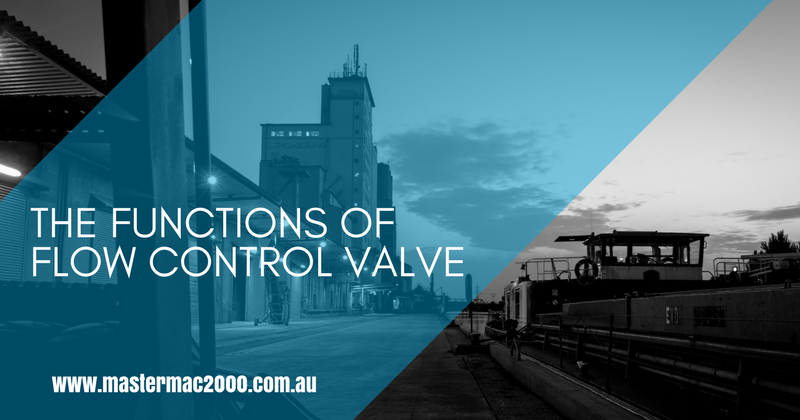The Functions of Flow Control Valve
What are the basic functions of a flow control valve and their application?
Flow control valves regulate the pressure or flow of fluid. They are designed to fit for complex pneumatic and hydraulic systems. The control valves respond to signals generated by devices like temperature gauges or flow meters. The valves have simple tool orifices with a complex set of electro-hydraulic valves to adjust in the different variations in pressure and system temperature. The throttled position of the main valve senses pressure across an orifice plate.
To reduce the actual flow rate in a specific area of a pneumatic circuit, the control valve fittings are used. This helps reduce the speed of the actuator while the needle valves control the flow in two directions. The flow control valves fitting is used to direct the system into only one direction allowing the flow of gas or liquid in the opposite direction.
Here are the functions of a flow control valve:
Clog no more
The flow control valves do not obstruct the fluid flow. The perfect design of the valves do not allow the dust, deposits, and small particles to clog the flow of fluid.
Ecologically friendly
Many industries today face the pressure of maintaining the global and ecological standards. These valves can become ecologically friendly by decreasing the wastes of natural resources and making good use of them.
Saves money and water
Flow control valves are useful in faucets, helps a lot in conservation. It helps save money on spending too much on water bills and wasting resources. The faucets can conserve up to 85% of the water used. This means not only low water bills to pay but also low demand in water supply during dry seasons.
Reduce working pressure
It allows the operator to depressurise the solution hose quickly. To release the back pressure, just turn it off and open the flow control valves. Then, change into our chosen tool.
Reliability and performance
These valves are used in various applications like food processing machines, conveyors, and material handling equipment.
Stem guiding
The simple design allows to support and control the plug. The limitations are due to the strength of the stem as the support is farther from the cap.. while the guiding performance is impaired, but this type of valve is cheaper to maintain and manufacture.
Post guiding
The next function is when there is a risk of fouling. The post is the part of the stem from the plug that extends to the valve body. It is smaller in diameter but significantly more than the stem.
The flow control valve is important for the system performance that relies on a port or a flow passage with a variable flow area. In hydraulics, it is used to regulate the speed of the components to control motors’ and cylinders’ flow rate. Its very location is critical to optimised system performance. The rate of flow varies due to downstream demand or changing of line pressures. When this happens, the pilot compensates by repositioning and changes the throttled position to maintain the flow rate desired.

About MasterMac2000: Your Trusted Pneumatic & Process Automation Partner.
LEADING THE INDUSTRY: Established in 1989, MasterMac2000 has grown to become one of Australia's largest privately owned pneumatic and process automation companies. We stock top-quality brands like Univer, Mack, Tolomatic, Mac, Piab, American, and Rotoflux in Brisbane.
SERVING QLD & NORTHERN NSW: We proudly service Queensland and Northern New South Wales for all your pneumatic and process equipment needs. Our mission is to provide the best pre and post-sales support while actively expanding our client base.
SOURCING HARD-TO-FIND PARTS: Not only do we stock quality components, but we also excel at sourcing those elusive, hard-to-find parts. With our extensive database and global network of contacts, getting the parts you require is as easy as a call to our highly skilled, professional sales team.
DEDICATED TO YOUR SUCCESS:
- Decades of expertise in pneumatics & process automation
- Carefully curated selection of world-class brands
- Exceptional sourcing capabilities for speciality parts
- Knowledgeable sales staff dedicated to finding solutions
- Unwavering commitment to customer service excellence
About The Author
Stuart Havill
Stuart Havill is the owner and manager of MasterMac2000, Queensland's largest privately owned pneumatic and process valve company.
With his early working career as a maintenance fitter for Boral in 1992, Stuart has spent his life in the field of pneumatics and process equipment. He gained extensive experience in plant design, maintenance, repairs, fabrication, and site management.
In 1996, he transitioned to a pneumatic sales technician role at MasterMac2000, where he excelled in key account management, providing cost-effective solutions, and managing a sales team of 9 employees.
Since 2002, Stuart has been the manager at MasterMac2000, overseeing the company's growth and establishing it as a leader in pneumatic automation and process valve engineering. His expertise spans customer training, CRM setup, industrial compressor sizing and installation, and turn-key project management.
Under Stuart's leadership, MasterMac2000 has been servicing the industry since 1988, with 5 full-time sales representatives covering northern rivers NSW, Queensland, Northern Territory, and PNG. The company prides itself on providing the best-priced solutions to all customers in the marketplace.
View Stuart’s LinkedIn profile to learn more about his expertise in pneumatics and process equipment.
